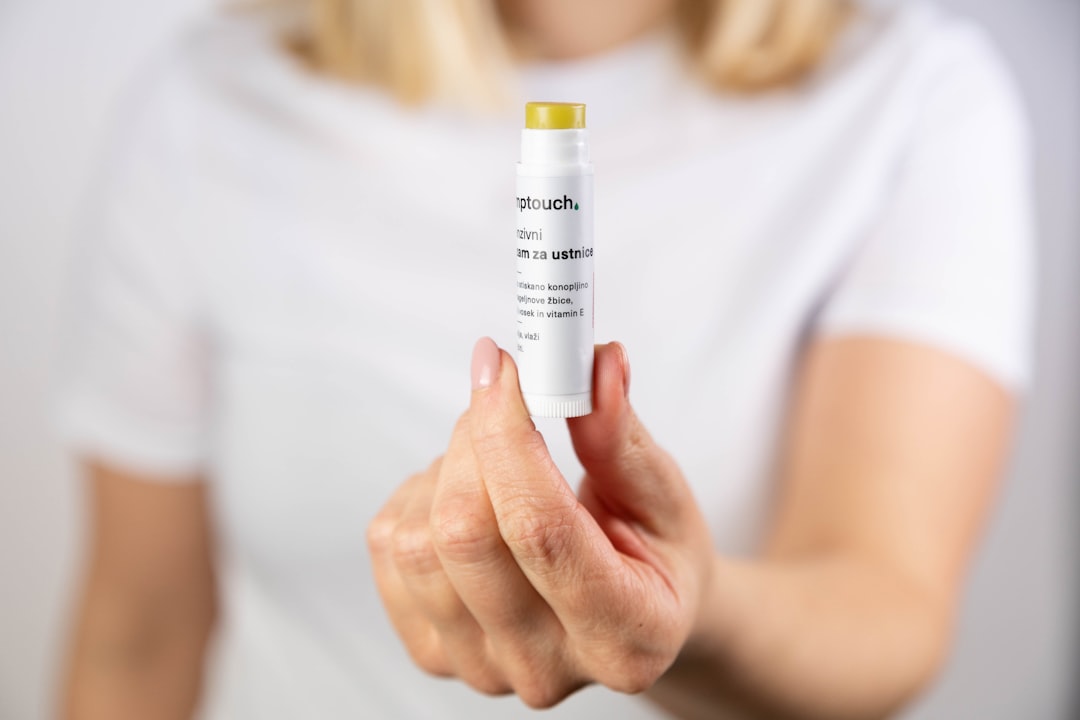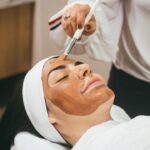Aftercare is a crucial component of any cosmetic or dermatological treatment. It serves as the bridge between the procedure and the desired results, ensuring that your skin heals properly and that you achieve the best possible outcome.
By prioritizing aftercare, you not only protect your investment but also enhance your skin’s overall health and appearance. Understanding the significance of aftercare can empower you to take control of your skin’s healing process. Aftercare is not merely a set of instructions to follow; it is a commitment to nurturing your skin and allowing it to recover optimally.
By adhering to aftercare guidelines, you can minimize the risk of side effects, reduce inflammation, and promote faster healing. This proactive approach can make a significant difference in how your skin responds to treatment, ultimately leading to a more radiant and youthful appearance.
Key Takeaways
- Aftercare is crucial for the success of any skin treatment
- Sun exposure should be avoided to prevent damage to the treated area
- Regular moisturizing and hydration are essential for maintaining skin health
- Gentle exfoliation can help in removing dead skin cells and promoting skin renewal
- Harsh chemicals and products should be avoided to prevent irritation and damage to the skin
- The treated area should be protected from environmental factors such as pollution and harsh weather
- It is important to follow post-treatment instructions provided by the skincare professional
- Any adverse reactions should be monitored and reported to the skincare professional immediately
Avoiding Sun Exposure
Understanding the Risks of Sun Exposure
Your skin is at its most vulnerable after a treatment, and exposure to UV rays can lead to complications such as hyperpigmentation, irritation, or even burns. Even brief moments in the sun can have lasting effects on your skin’s recovery, making it essential to take sun protection seriously.
Staying Safe in the Sun
To minimize the risks associated with sun exposure, it’s crucial to stay out of direct sunlight for at least a few weeks following your procedure. When you need to be outdoors, wear protective clothing such as wide-brimmed hats and long sleeves to shield your skin from harmful UV rays. Whenever possible, seek shade and plan your outdoor activities during times when the sun’s rays are less intense, typically early in the morning or late in the afternoon.
Applying Sunscreen for Added Protection
If you must be outside, applying a broad-spectrum sunscreen with a high SPF is non-negotiable. This will create a barrier against UV radiation and help safeguard your skin as it heals. By taking these precautions, you can ensure a smooth and successful recovery.
Moisturizing and Hydrating the Skin
Keeping your skin moisturized and hydrated is another essential aspect of aftercare that should not be overlooked. After a treatment, your skin may feel dry or tight, which can be uncomfortable and hinder the healing process. By incorporating a good moisturizer into your routine, you can help restore your skin’s natural moisture balance and promote healing.
Look for products that are gentle, fragrance-free, and specifically formulated for post-treatment care. In addition to using a moisturizer, it is vital to stay hydrated from within. Drinking plenty of water throughout the day will not only benefit your overall health but also support your skin’s recovery.
Hydrated skin is more resilient and better equipped to heal effectively. You might also consider incorporating hydrating serums or masks into your skincare routine for an extra boost of moisture. These products can provide additional nourishment and help soothe any irritation or redness that may occur after treatment.
Exfoliating the Treated Area
| Exfoliating the Treated Area | Frequency | Benefits |
|---|---|---|
| Before Treatment | 1-2 times per week | Removes dead skin cells, allows for better product absorption |
| After Treatment | Avoid exfoliation for 3-5 days | Allows skin to heal and reduces risk of irritation |
Exfoliation plays a significant role in maintaining healthy skin, but it is essential to approach it with caution after a treatment. While exfoliating can help remove dead skin cells and promote cell turnover, doing so too soon or too aggressively can disrupt the healing process. It is crucial to follow your practitioner’s recommendations regarding when and how to exfoliate the treated area.
Once you receive the green light to begin exfoliating, opt for gentle methods such as chemical exfoliants with mild acids or soft physical scrubs. Avoid harsh scrubs or tools that could irritate your sensitive skin. Exfoliating regularly but gently can help prevent clogged pores and keep your skin looking fresh and vibrant.
Remember that patience is key; allowing your skin ample time to heal before introducing exfoliation will yield better long-term results.
Avoiding Harsh Chemicals and Products
In the aftermath of any cosmetic treatment, it is vital to be mindful of the products you apply to your skin. Harsh chemicals found in certain skincare products can exacerbate irritation or cause adverse reactions during the healing process. You should steer clear of products containing alcohol, fragrances, or strong active ingredients like retinoids or acids until your skin has fully recovered.
Instead, focus on using gentle, soothing products designed for sensitive skin. Look for formulations that contain calming ingredients such as aloe vera, chamomile, or hyaluronic acid. These ingredients can help reduce inflammation and promote healing without causing further irritation.
By being selective about the products you use during this critical period, you can create an environment conducive to optimal healing and recovery.
Protecting the Treated Area
Avoiding Irritation and Infection
For instance, if you had a laser treatment or chemical peel, you should avoid swimming pools, hot tubs, or saunas for a specified period to prevent irritation or infection.
Preventing Infection Through Good Hygiene
Additionally, be cautious about touching or picking at the treated area. Your hands carry bacteria that can lead to infections if they come into contact with open or healing skin. If you need to apply any products or touch your face, ensure that your hands are clean and sanitized first.
Ensuring the Best Possible Results
Taking these precautions will help safeguard your skin during its recovery phase and contribute to achieving the best possible results from your treatment.
Following Post-Treatment Instructions
Every cosmetic procedure comes with specific post-treatment instructions tailored to your individual needs and the type of treatment received. Following these guidelines diligently is essential for ensuring optimal healing and achieving the desired results. Your practitioner will provide detailed instructions regarding what to do—and what not to do—after your treatment, so it’s crucial to pay close attention.
Make it a habit to review these instructions regularly during your recovery period. If you have any questions or uncertainties about what is recommended, don’t hesitate to reach out to your practitioner for clarification. Adhering strictly to these guidelines will not only enhance your recovery but also demonstrate your commitment to achieving the best possible outcome from your treatment.
Monitoring and Reporting Any Adverse Reactions
Finally, being vigilant about monitoring your skin for any adverse reactions is an essential part of aftercare. While most treatments are safe and effective, some individuals may experience unexpected side effects such as excessive redness, swelling, or discomfort. It’s important to be aware of what constitutes normal healing versus signs of complications.
If you notice anything unusual or concerning during your recovery process, don’t hesitate to contact your practitioner immediately. Early intervention can often prevent minor issues from escalating into more significant problems. By staying proactive about monitoring your skin’s response to treatment and reporting any adverse reactions promptly, you can ensure that you receive the appropriate care and support needed for a successful recovery.
In conclusion, aftercare is an integral part of any cosmetic treatment journey. By understanding its importance and following best practices—such as avoiding sun exposure, moisturizing diligently, being cautious with exfoliation, steering clear of harsh chemicals, protecting the treated area, adhering to post-treatment instructions, and monitoring for adverse reactions—you can significantly enhance your healing process and achieve optimal results. Your commitment to aftercare will not only reflect in the health of your skin but also in your overall satisfaction with the treatment you have chosen.
One helpful article that provides detailed guidance on post-treatment care is available on the In Laser Hair Removal website. This article offers valuable insights on how to care for your skin after laser hair removal, including tips on moisturizing, avoiding sun exposure, and managing any potential side effects. By following these aftercare tips, you can maximize the effectiveness of your laser hair removal treatment and maintain smooth, hair-free skin for longer.
FAQs
What is laser hair removal aftercare?
Laser hair removal aftercare refers to the steps and precautions that should be taken after undergoing a laser hair removal treatment to ensure proper healing and to minimize any potential side effects.
Why is laser hair removal aftercare important?
Laser hair removal aftercare is important to promote healing, reduce the risk of complications, and maximize the effectiveness of the treatment. Proper aftercare can also help to minimize any discomfort or irritation.
What are some common laser hair removal aftercare tips?
Common laser hair removal aftercare tips include avoiding sun exposure, using gentle skincare products, avoiding hot showers and baths, avoiding excessive sweating, and keeping the treated area clean and moisturized.
How long does it take for the skin to heal after laser hair removal?
The skin typically takes a few days to a week to heal after laser hair removal. However, this can vary depending on the individual’s skin type and the specific laser treatment used.
Are there any specific products that should be used for laser hair removal aftercare?
It is recommended to use gentle, fragrance-free skincare products for laser hair removal aftercare. This may include gentle cleansers, moisturizers, and sunscreen to protect the treated area from sun exposure.
What are some common side effects of laser hair removal and how can they be managed during aftercare?
Common side effects of laser hair removal may include redness, swelling, and mild discomfort. These can be managed during aftercare by applying soothing creams, avoiding irritants, and following the aftercare instructions provided by the treatment provider.








